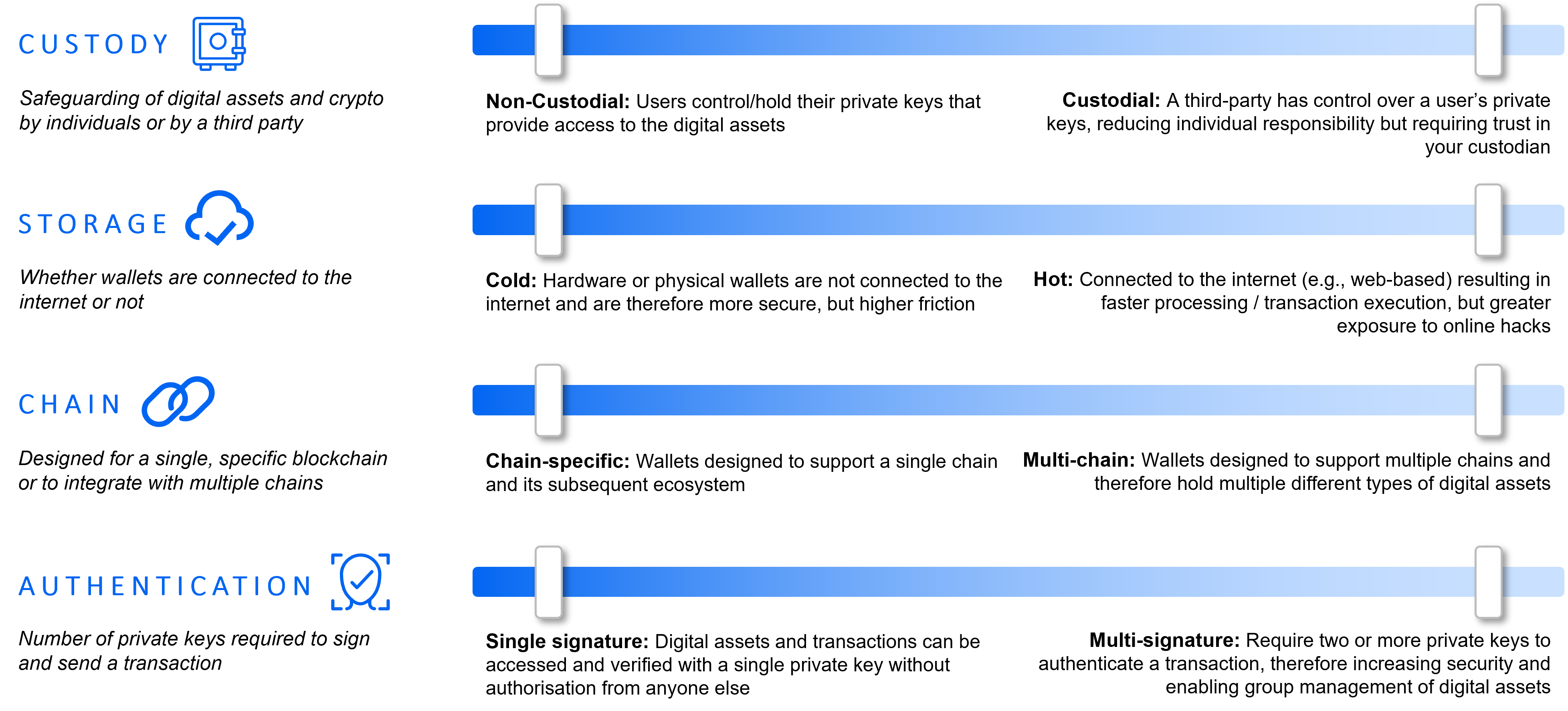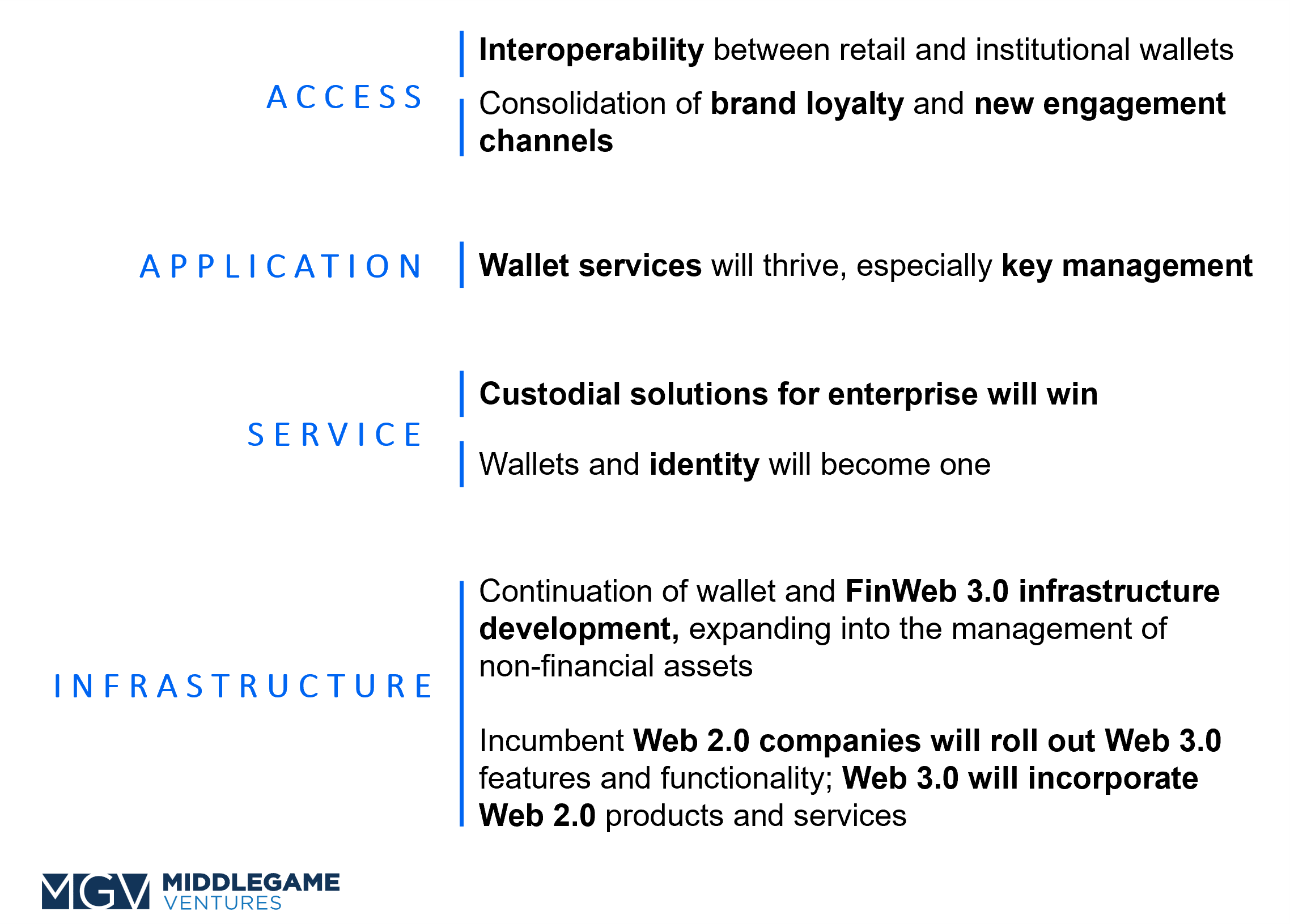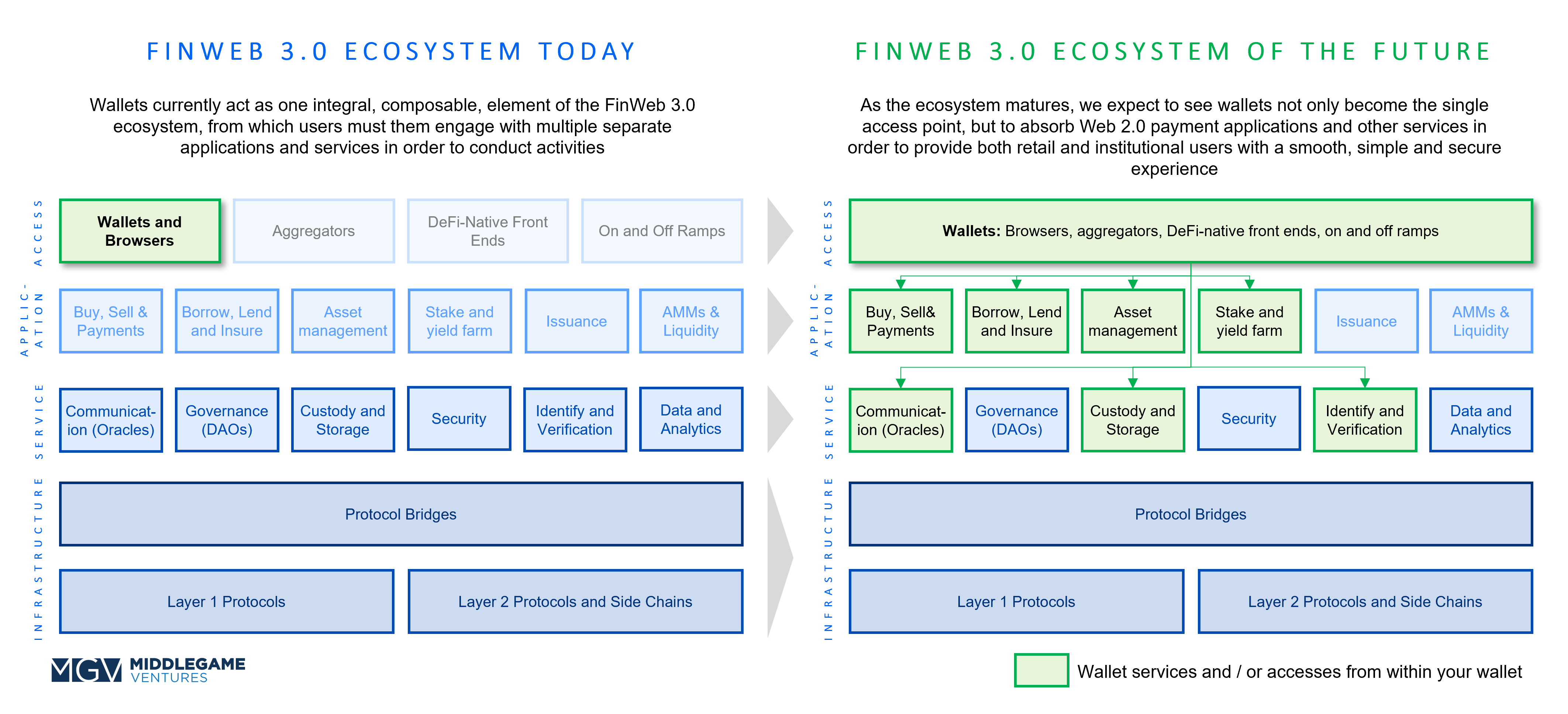We foresee the potential for a dramatic shift in financial services delivery where Wallets become the central nervous system of a decentralising financial ecosystem.
Wallets are poised to create the requisite bridge between Web 2.0 and Web 3.0 by establishing a digital authority manager and fulfilling the ‘super app’ promise of Web 3.0. Ultimately, while the timing is uncertain, we believe that Wallets will provide the single biggest opportunity for new entrants and pose the greatest threat to incumbent financial service providers.
Wallets can be defined as software or hardware which enable both retail or institutional users to access crypto, fiat and digital assets on their own. Wallets do not hold any currency – they store the information needed to complete transactions and access funds/assets.







